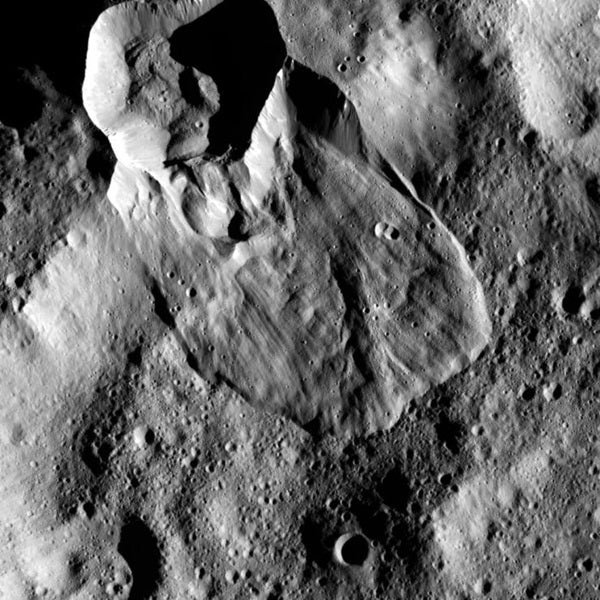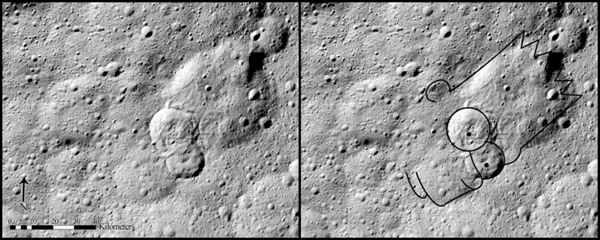Ceres has been an interesting crash course in dwarf planet weirdness for a while now, with data on ice, salt, water, bright spots, and more slowly trickling out of the Dawn spacecraft. Now a study led by Georgia Institute of Technology and published in Nature Geoscience unveils more about water on Ceres.
The study led by Georgia Tech Assistant Professor and Dawn Science Team Associate Britney Schmidt provides more proof that Ceres, a dwarf planet residing in the asteroid belt, is a mix of rock and ice.
The team used data from NASA’s Dawn spacecraft to identify three different types of landslides on Ceres. Type I landslides are round, large, and occur at higher altitudes, which is where researchers assume most of Ceres’ ice is located. These types of landslides look like rock glaciers and icy landslides.
Type II is most common and occurs at mid-latitudes. These landslides look like deposits from avalanches on Earth and are thinner and longer than Type I landslides. The researchers fondly nicknamed this type “Bart” because its elongated appearance looks like Bart Simpson’s head from the TV show The Simpsons.
The last type of landslide the team discovered is Type III, which forms when ice is melted during impact events and occurs at low altitudes from large craters.
“Landslides cover more area in the poles than at the equator, but most surface processes generally don’t care about latitude,” Schmidt said in a press release. “That’s one reason why we think it’s ice affecting the flow processes. There’s no other good way to explain why the poles have huge, thick landslides; mid-latitudes have a mixture of sheeted and thick landslides; and low latitudes have just a few.”
Besides finding the different types of landslides, the study also revealed that about 20 to 30 percent of craters more than six miles (10 kilometers) wide end up with some type of landslide. Researchers also estimated that the upper layers of Ceres could be from 10 to 50 percent ice by volume just based on the shape of Ceres and the distributions of landslides.
“It’s just kind of fun that we see features on this small planet that remind us of those on the big planets, like Earth and Mars,” Schmidt said. “It seems more and more that Ceres is our innermost icy world.”











